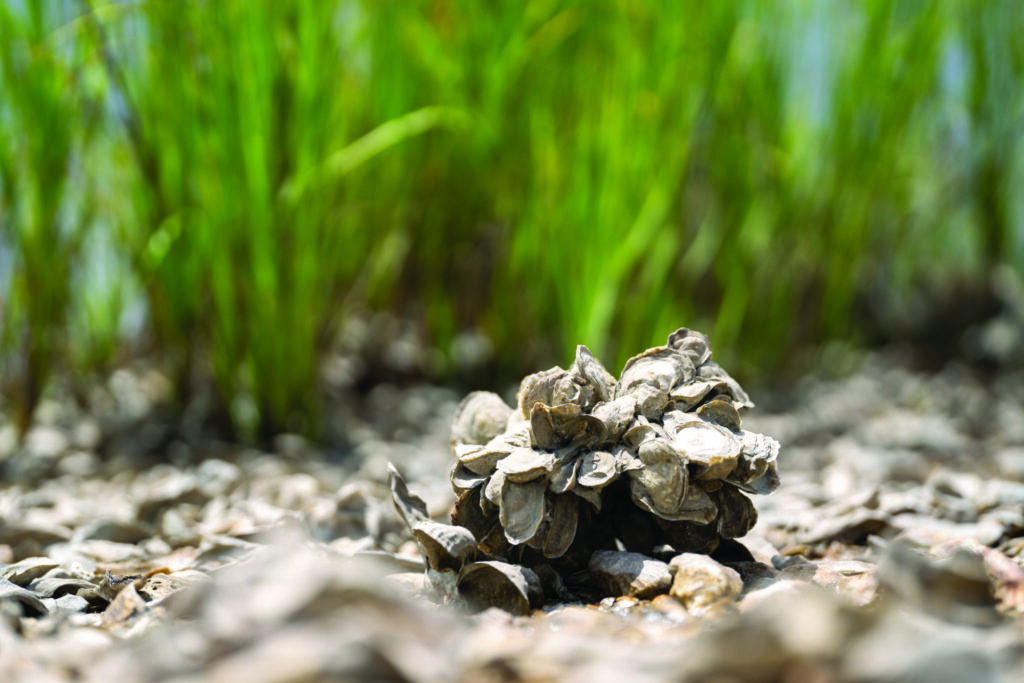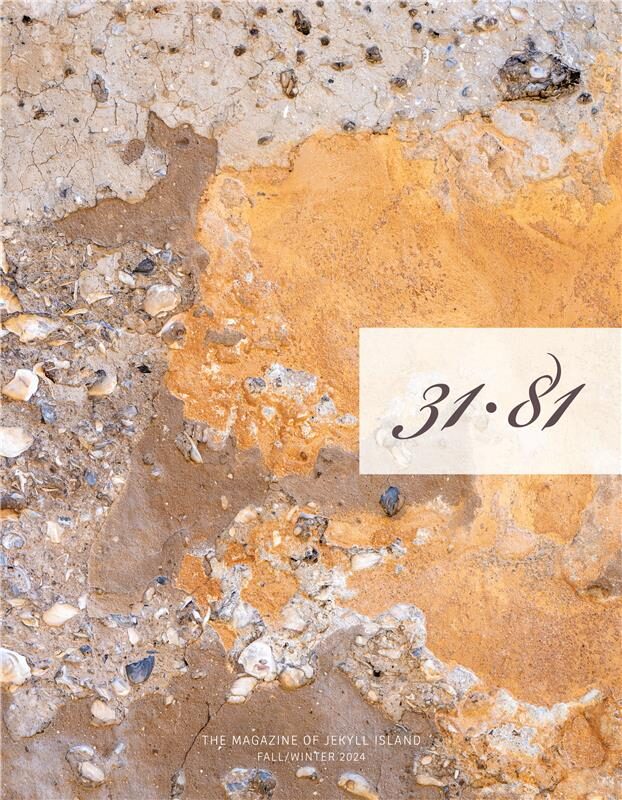This beloved bivalve acts as backbone of the marsh.
BY TESS MALONE
Jekyll Island is home to a multitude of mollusks, none more remarkable than the humble oyster. This cherished bivalve is the backbone of the marsh ecosystem. “They prevent sediments from free-flowing outwardly, acting as biological filters,” says Joseph Colbert, the Jekyll Island Authority’s wildlife biologist.
Find them up and down the marsh creeks, where they thrive in Jekyll’s tides. The see-saw of water levels is ideal for oysters to prosper.
After they make their reefs on rocks, piers, or any other hard, submerged surface, oysters get comfortable enough to release baby oysters, known as spat, which float around until they find a place to land.
Oyster reefs are open to all, with crabs and fish taking up residence for protection. This watery apartment community offers stability and prevents erosion, all while filtering out plankton and decaying vegetation to improve water quality and manage bacteria. Somewhere around 50 gallons of water can be filtered through a single oyster each day. The process removes nitrogen, phosphorus, and other harmful minerals and adds them to the oyster’s shell.
Considered by many as a delicacy, oysters were a dietary staple of indigenous communities thousands of years ago. The natives discarded their shells in middens, refuse piles which have become key archaeological sites. Oyster shells also were used in a type of concrete known as tabby, visible today in places like Horton House, toward the north end of Jekyll, and Hollybourne Cottage, in the Historic District. Oyster shells are still used as a material in some concrete today.
If you want to see oysters in their natural habitat, explore at low tide. But remember: If you’re going to harvest them, you must have a permit, you need to be in a harvesting area, and the oysters have to be at least three inches long. Harvesting is allowed in a few spots within Jekyll Island State Park, including outside the entrance gate to Jekyll Island, near the other end of the Causeway, on the south side. The Georgia Department of Natural Resources website features a map of recreational shellfish harvest areas.


